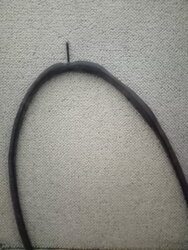Fields Electric
Well-Known Member
Had this happen to me recently on an old 26" 1/4 rim. Yes the tyre was the correct size as was the rim. It was a modern tyre, the rim probably dates from the 1970's. I put it down to progressing technology. in those days I never used a track pump or knew of anyone that used one to inflate a tyre so it would never get to anything like the pressure stated on the modern tyre. Instead I only ever inflate it to 60 PSI i have never had an issue since. As for fitting tyres, I always put a little bit of air in the tube before using levers to put the tyre on. That way the tube is less inclinded to get trapped under the tyre bead.


